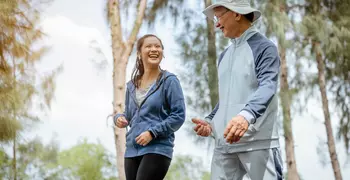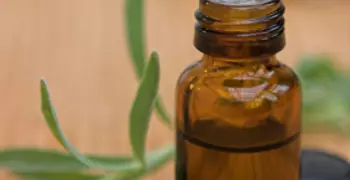Ayurvedic Medicine

What Happens in a Visit to an Ayurvedic Practitioner?
When you visit an Ayurvedic practitioner, be prepared to talk about yourself. Because Ayurveda emphasizes balance in all areas of your life, a trained practitioner will not only examine your body, but will take an extensive personal and medical history, including questions about daily diet, profession and working conditions, exercise routines, relationships, and mental health.
This thorough intake process helps the practitioner identify key symptoms and potential causes of imbalance and determine suitable treatment options.
What is the initial examination?
Ayurvedic examinations generally consist of three parts:
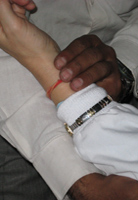 Observation (Darshan): The practitioner first evaluates general physical health by looking at the patient and observing his/her movements, body contour, color of the skin and eyes, facial lines and ridges, shape of the nose, and qualities of the lips, hair, and nails.
Observation (Darshan): The practitioner first evaluates general physical health by looking at the patient and observing his/her movements, body contour, color of the skin and eyes, facial lines and ridges, shape of the nose, and qualities of the lips, hair, and nails.- Touch (Sparsha): The practitioner then employs touch, including palpation (pressing down on parts of the body, called sparshanam in Ayurveda), auscultation, which is listening for sounds made by the internal organs (shrvanaa), and percussion or tapping (akotana). There is special focus on the patient's pulse, tongue, nails, and speech. Laboratory testing is also included under this category.
- Questions (Prashna): The practitioner asks the patient about complaints and symptoms, as well as the duration of discomfort and disease progression. The practitioner also inquires about mental and psychological conditions.
How do practitioners make diagnoses and decide upon treatments?
Most westerners are familiar with visiting a healthcare provider when we feel ill. The provider diagnoses the sickness and determines which pathogens, such as bacteria or virus, caused it. The treatment is then geared toward selecting a technique to battle those pathogens. The same medicines, procedures, and doses are often used for multiple people battling the same illness.
An Ayurvedic diagnosis, and subsequent treatments, differ from this Western process in that the diagnosis is made not only on the disease level (called roga), but also on the patient level (called rogi). The exhaustive examination helps the Ayurvedic practitioner not only diagnose the disorder, but individualize or tailor treatments for each patient.
To make a diagnosis, the Ayurvedic practitioner uses a method called rogi-roga pareeksha, which combines disease analysis with deep examination of each individual.
 The Ayurvedic practitioner considers the whole human being, believing that people have within them the required energy to bring the body back to a healthy, or balanced, state.
The Ayurvedic practitioner considers the whole human being, believing that people have within them the required energy to bring the body back to a healthy, or balanced, state.
So instead of focusing on a treatment or medicine to heal the illness, the Ayurvedic practitioner concentrates on the techniques that will strengthen the healthy elements inherent in every body, which will in turn help the individual to recover. This tenet is called svabhavoparamavada, and it refers to the Ayurvedic ideal of helping the body call upon its own energy to heal. Treatments and medicines are a vital part of this process, but act only to support the body's self-reparation, rather than cause it.
According to Ayurveda, diseases are due to a doshic imbalance. Determining the patient's dosha, and then identifying the root cause of a disease, requires precise training.
What are some Ayurvedic treatments?
The Ayurvedic practitioner has a wide array of treatments and therapies at his/her disposal. Practitioners may include a variety of treatments in an individual's dincharya (daily recommended routine) and ritucharya (seasonal routine).
Herbs and herbal formulas
This ancient practice is key to Ayurvedic medicine, which teaches that the action and effectiveness of each herb is determined by its ras (taste), virya (active potency), and vipak (post-digestive effect). Thus the Ayurvedic administration of herbs is considered a precise science, requiring deep knowledge of plants and their effect on human physiology, biochemistry, and psychology. Ayurveda does not support the theory that herbs are benign and have no side effects. Thus, Ayurvedic herbs should only be prescribed by qualified practitioners.
Panchakarma
This multi-step detoxification regimen is thought to remove ama (a toxin). The regimen includes massage, steam treatment, vamana (induced vomiting), virechana (use of prescribed herbal and oil-based laxatives) and basti (medicated enema), blood letting, and nasya (a nasal treatment). These treatments are followed by a strict dietary and herbal regimen, a rejuvenating therapy, and recommendations for daily routines. Note: this invasive procedure requires the supervision of a trained Ayurvedic practitioner; contraindications and side effects should be closely monitored.
Diet and nutrition
Ayurvedic diet and nutrition practices are vital to healthy living, and are important components of treatment, recovery, and disease management. Dietary practices are tailored to each individual's constitution, with six primary "tastes" forming the basis for practitioners' recommendations:
- Sweet: promotes strength and nourishes all tissues
- Sour: stimulates digestive power
- Salty: maintains water electrolyte balance
- Pungent: improves digestion and absorption
- Bitter: stimulates all other tastes
- Astringent: helps in absorption
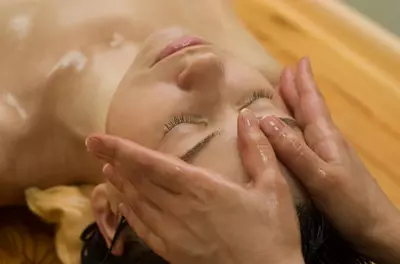
Ayurvedic massage
These treatments are performed by trained therapists who work under the supervision of trained Ayurvedic practitioners. Oils are selected and prepared according to the practitioner's specific diagnosis.
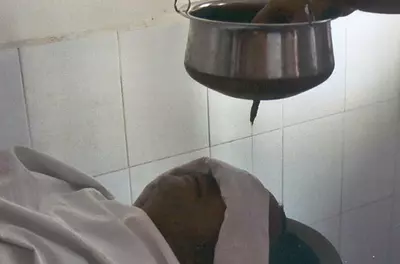
Shirodhara
This special technique involves dripping medicated oil on the forehead, or "third eye region." The type of medicated oil used, the number and length of treatments, and the duration of the overall therapy must be determined by an Ayurvedic practitioner, and performed by a trained massage therapist under proper supervision.
An example of a visit to an Ayurvedic practitioner
Rajesh is a 38-year-old male of Indian origin who sought Ayurvedic medical advice for several health problems, including toe pain, asthma, skin diseases, and anxiety. His Ayurvedic practitioner believed that all disease has origins in undigested or improperly digested food, which converts into toxins, or ama, which is then absorbed by bodily tissues, creating disease. Thus, he asked Rajesh detailed questions about his diet. Rajesh reported eating a variety of foods including eggs, alcohol, very spicy dishes, pizza, lentils, and fried food.
In addition to exploring Rajesh's diet, his practitioner examined his very red and inflamed toe, which Rajesh claimed was even more painful after eating lentils and eggs. The practitioner then monitored Rajesh's colon and stomach, using a method measuring superficial pulse. The practitioner also assessed his heart and liver, using a deeper pulse technique. Finally, the practitioner inspected Rajesh's tongue and nails for any discoloration or unusual coating.
Based on this thorough examination, the practitioner diagnosed that Rajesh's bodily imbalances had caused gout. To alleviate this condition, as well as create and maintain better health, the practitioner created a health regimen for Rajesh, largely based on diet and nutrition. Rajesh was encouraged to avoid spicy and fried foods, pickles, tomatoes, and fermented items. A diet including buttermilk, carrots, and bitter melon was prescribed, as was a specific herbal remedy.
Guha, A. (2006). Ayurvedic concept of food and nutrition. J Elements, 4(1).
Kathaware, R.S. (2007). The ethics of ayurvedic massage therapy. J Elements, 5(1).
Lad, V.D. (2006). Six stages of nutrition. J Elements, 4(1).
Pandey, M. M., Rastogi, S., & Rawat, A. K. (2007). Saussurea costus: botanical, chemical and pharmacological review of an ayurvedic medicinal plant. Journal of ethnopharmacology, 110(3), 379-390
Rasool, M., & Sabina, E. P. (2007). Antiinflammatory effect of the Indian Ayurvedic herbal formulation Triphala on adjuvant-induced arthritis in mice. Phytotherapy Research, 21(9), 889-894.
Sabina, E. P., & Rasool, M. (2008). An in vivo and in vitro potential of Indian ayurvedic herbal formulation Triphala on experimental gouty arthritis in mice. Vascular Pharmacology, 48(1), 14-20.
Tayade, W. (2005). Shirodhara: A treatment of choice. J Elements, 3(2).

